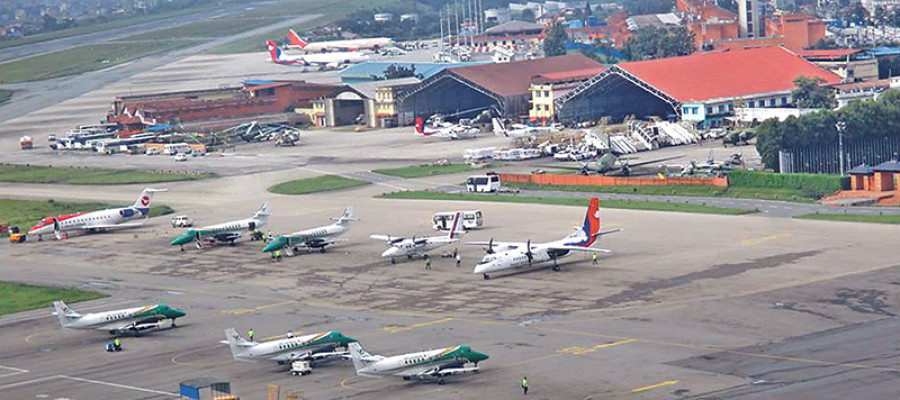Money
Poor airport infra to put brakes on fleet expansion
There is bad news for new companies planning to enter the domestic aviation market and old players mulling over increasing fleet size, as a study has found that existing infrastructure of the country’s domestic airports will not be able to accommodate more aircraft for at least two years.
Sangam Prasain
There is bad news for new companies planning to enter the domestic aviation market and old players mulling over increasing fleet size, as a study has found that existing infrastructure of the country’s domestic airports will not be able to accommodate more aircraft for at least two years.
A study on ‘airport capacity declaration’ conducted by the Civil Aviation Authority of Nepal (Caan) has recommended complete halt in issuance of new air operator’s certificate (AOC) until the airport infrastructure is upgraded.
There are “no parking spaces” in airports across the country, the report submitted to Caan’s Director General Sanjiv Gautam on Friday said. This means newly inducted aircraft will not find a space for parking at airports across the country.
The parking capacity at the country’s airports has hit the saturation point, as most of the airlines have added bigger aircraft despite infrastructure hurdles.
For instance, 2017 saw induction of at least a dozen of aircraft in the domestic sector. Among them, four were 50- to 70-seater Canadair Regional Jet (CRJ) series aircraft; three were 72-seater ATR; and one was 58-seater MA60 twin-engine turboprops. The domestic operators have ordered more aircraft for the next year, as demand for air travel has continued going up. Likewise, international operators—Nepal Airlines and Himalaya Airlines—are planning to expand their fleet by bringing in a number of large jets next year.
The Caan had conducted the study on actual capacity of airports for the first time amid growing concerns over severe air traffic congestion at Tribhuvan International Airport (TIA) and other key airports.
“We have received the report and necessary action will be initiated to implement it. The issue will be discussed with the Civil Aviation Ministry and concerned stakeholders,” said Gautam, without elaborating on the regulator’s plan. “Obviously, there are some safety issues which should not be compromised.”
Construction of new parking bays is only the alternative to address the problem currently being faced by Nepali airports, which will take some time, according to Gautam.
The report shows that 46 fixed-wing aircraft are serving the domestic sector.
Although TIA has a capacity to accommodate 17 aircraft on its domestic parking bay, up to 35 aircrafts are being accommodated, which is against the standard norms. In order to reduce pressure on TIA’s domestic parking bay, the Caan has allowed airline companies to set up bases outside Kathmandu. Following this, eight aircraft of different airline companies are using Nepalgunj airport as base station. Aircraft of different airline companies are also using airports in Biratnagar, Pokhara and Surkhet as base stations.
The report shows that there is potential risk of minor and major accidents on the ground due to overcrowding of the aircraft. The growing traffic congestion on ground and air has been adversely putting pressure on air traffic controllers, pilots and airlines operational staffers, the report said. It is also creating safety hazards for passengers and making a routine delay in departures and arrivals.
The report said that delays caused by congestion have been eroding the credibility of airports and airlines and causing environmental pollution. It said that unhealthy competition between airlines is another thing to look upon. The report has suggested the airline companies “to put safety first, not business”.
It has recommended the government to construct and expand parking bays at TIA and other airports to accommodate more aircraft and expand business.
According to Gautam, the Caan’s budget, which is yet to be passed, has allocated fund to build new helipad on the eastern part of TIA. “We can accommodate 10-12 aircraft on the existing helipad,” he said.
Experts say that Nepal’s sole international airport has turned into a “roll and hold” facility. Airport managers and airline operators struggle to ensure a smooth movement during the peak season—September-November—due to infrastructure bottlenecks, particularly due to parking space crunch at TIA.
“It is very common nowadays to be told to hold in the air as well as on the ground,” airlines officials said, adding winter is more painful for airlines as an hour’s delay or hold is common during this time when TIA handles nearly 400 domestic flights and about 80 international flights daily.




 6.12°C Kathmandu
6.12°C Kathmandu














